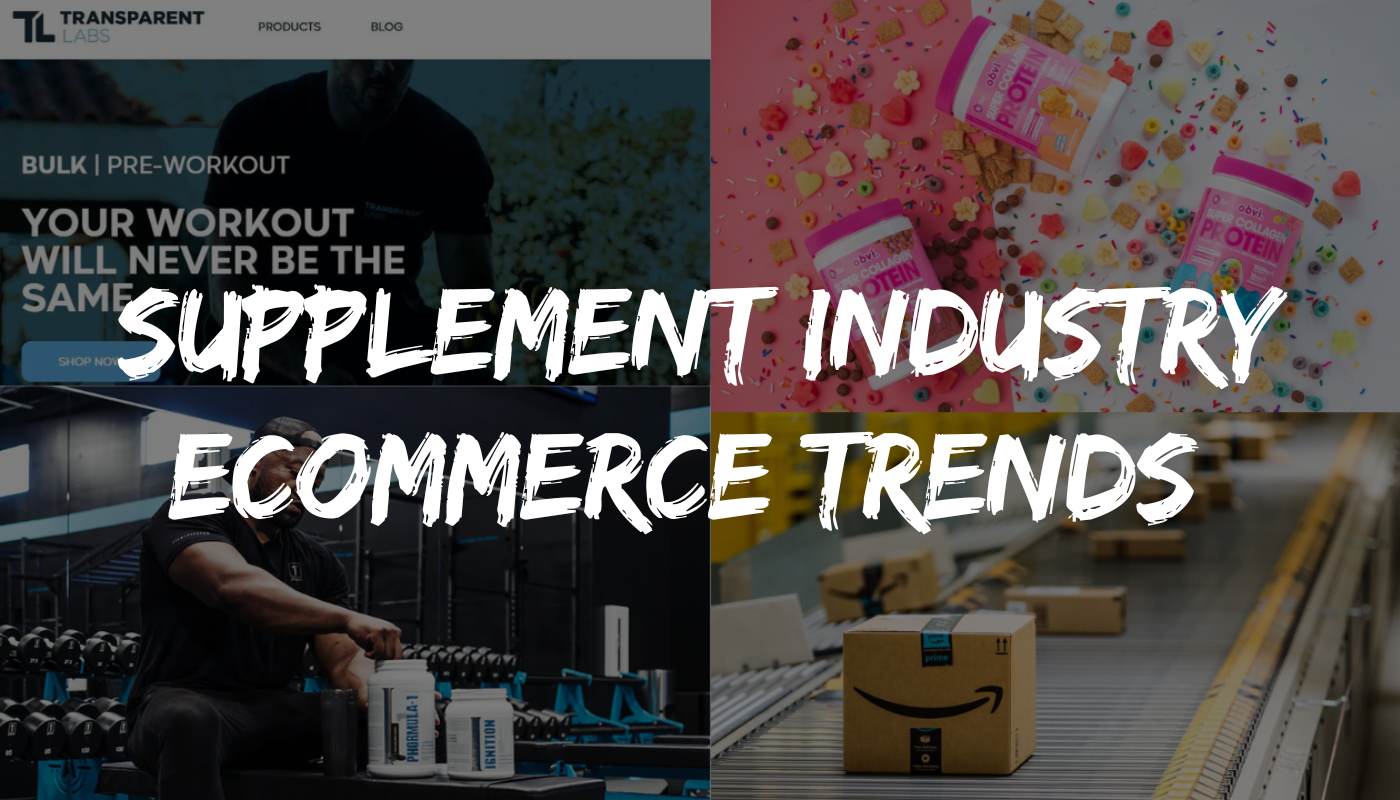Supplement Industry Ecommerce Trends You Need to Know
The supplement industry continues to change faster than Garfield can eat a tray of lasagna. Much of that can be attributed to new technologies and shifts in consumption habits. These massive disruptions dramatically accelerated ecommerce migration, which is creating both new opportunities and predicaments for supplement brands.
Here are a handful of significant ecommerce trends that supplement brands must watch out for heading into 2023…
Back to the Basics
You don’t win football games because of the fancy play calling; it comes down to the basics of blocking and tackling. If that analogy was extended into CPG e-commerce, the winning formula would be mostly attributed to the basics of pricing and inventory. Throughout the last few years, it’s been anything but simple to flawlessly execute on these CPG industry basics. While online sales of supplements have soared, it has happened against the backdrop of an extremely complicated value chain environment.
Retail prices have been rising for most supplements throughout the last year. This is because supplement brands continue to face an onslaught of rising expenses. Retaining a margin neutral position online will continue to be difficult for any supplement brands that doesn’t have an inelastic pricing relationship with demand. To camouflage the needed price increases, supplement brands will pair them with new packaging innovations or sizes, and new “improved” products.
Supplements brands have also been facing global supply chain constraints that are unlike any other recent memory. While going out of stock is a huge no-no in the CPG industry, it’s a double whammy when it happens on e-commerce marketplaces such as Amazon or Walmart. Not only does out of stock situations online cause loss of revenue, but it can also drop the product ranking within search algorithms. This creates a situation where supplement brands will have to spend extra in paid marketing to jumpstart conversions and get the listing back to its search ranking. Fact is, staying in stock will become a competitive advantage.
Purpose-driven takes center stage
While shoppers aren’t expecting supplement brands to be at the “believe in something, even if it means sacrificing everything” level yet, it’s quickly progressing in that direction. The attitude-behavior gap around purpose-driven purchasing has begun close, as recent research suggests that a growing percentage of Millennial and Gen Z consumers buy CPG products based on shared values. The “COVID-19 Effect” shone light on many societal crises that has shaken the CPG community…
Sustainability= Supplement brands need to start making commitments and taking action to bring meaningful environmental change.
Inclusivity = Supplement brands should prioritize gender and racial diversity and inclusion throughout the value chain and internally at the leadership level.
Transparency = Supplement brands should be utilizing the extra storytelling advantage that e-commerce provides to communicate clearly its environmental, social, and corporate governance (ESG) standards.
The Third Shopping Dimension
Most CPG shopping today is done out of necessity or utility, but what happens when you sprinkle in some entertainment? The “shopping as entertainment trend” (also known as shopatainment) has become red hot. Shopatainment takes elements from influencer marketing, live streaming, gaming, and immersive experiences. It gives supplement brands a fresh new way to form stronger connections with consumers through authentic interactions and brand storytelling. Media and commerce have been converging for years, but with Americans on average now spending hours on social media apps daily, it was only natural that platforms like TikTok took major steps forward in its commerce aspirations. Supplement brands can now leverage the huge social followings they have amassed and pair them with commerce mechanisms to create a frictionless ecommerce shopping experience.
Amazon Becomes “the Coliseum”
Amazon continues to be the undisputed leader in the competitive e-commerce space. The “Earth’s most customer-centric company” has built a flywheel that positions them as the resounding default first product search. A key segment of that Amazon flywheel is adding more sellers, which correlates to an increase in product selection. With many businesses losing key retail partners to governmental determinations of “non-essential business” or restricted operating environments throughout the last few years, having an Amazon strategy became imperative. That drove 42 percent more brands to start selling on Amazon in response to the pandemic. It has never been more competitive on Amazon and supplement brands will need to work harder to earn top search rank results. Knowing full well that most supplement product categories, especially functional food and beverage, are in “land grab” mode on the Amazon platform, investments across demand (e.g. Amazon Advertising) and conversion (e.g. Product Content) drivers will continue to rise in proportion to competitiveness.
Retention Gets Spotlight
It’s no coincidence that retention was left to be last on this trend spotting list. Even in the era of rising marketing costs and ban on third-party cookies, optimizing for retention usually takes a backseat to acquisition strategies. Supplement brands are notorious for trusting that a “great product” will be the only retention driver it needs to win. In today’s low barriers to entry operating environment that has caused brand proliferation, a great product is only going to get you so far in retaining customers. With compressed profitability, supplement brands will start to look at ecommerce acquisition decisions through a customer retention lens because its 5 to 25 times cheaper to retain existing customers than go after new ones. The post-purchase segment of the online customer journey will become more personalized and emphasis will be placed on loyalty programs that reward ongoing support and brand advocacy.
Final Thoughts
If the supplement industry and ecommerce were dating, they would still be in the “honeymoon phase” of the marriage. Supplement brands must remember that this relationship will still have its rocky moments ahead as both grow together, but even Garfield’s Grandma Arbuckle can see that the functional CPG category and e-commerce is destined for a long and happy marriage.

